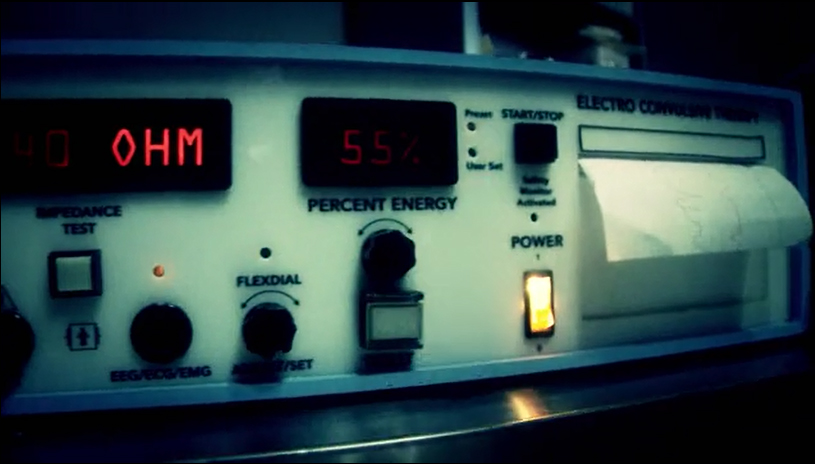By Jan Eastgate
President, CCHR International
The Mental Health Industry Watchdog
May 7, 2020
New Zealand police announced that a fresh inquiry into child torture using electroshock at Lake Alice psychiatric hospital in the 1970s could lead to criminal charges and extradition of psychiatrist responsible, Selwyn Leeks.[1] Despite 40 years since the abuses occurred, a December 2019 damning report from the United Nations Committee on Torture promoted police to reopen the case. The NZ government reported, “Police consider the allegations of ECT applied to the patients’ genitals could reach the threshold of an indecent assault under the Crimes Act 1961.”[2]
Additionally, the highest form of government inquiry called a Royal Commission into Abuse in State Care is scheduled to hold public hearings about Lake Alice’s child and adolescent unit later in the year, at which police will give evidence. New Zealand’s Children’s Commissioner Andrew Becroft has said Lake Alice remains a “damning indictment on New Zealand’s past care and protection practices”, and further investigation into the abusive practices at the former psychiatric hospital was clearly required.[3]
Citizens Commission on Human Rights (CCHR) investigated the hospital in the 1970s finding Leeks was electrocuting boys’ genitals for behavior modification using an electroconvulsive therapy (electroshock) device. The children were not anesthetized but punitively shocked directly to various body parts. CCHR was instrumental in obtaining a magisterial inquiry at the time and forced the closure of the shock ward.[4] Leeks was not prosecuted and moved to Australia where CCHR persisted in filing complaints with a medical licensing board against him practicing. The psychiatrist eventually surrendered his license over charges of unprofessional conduct. Separately, an Australian court ordered him to pay $55,000 in damages to a female patient he’d sexually abused.[5]
CCHR sees the NZ case as a test for prosecuting other instances where ECT devices were used to torture patients, regardless of how long ago.
In the 1990s CCHR joined surviving Lake Alice victims in demanding compensation for them and in 2001, the government finally apologized, paying out a mere NZ$10 million (US$6.7 million).[6] CCHR also supported a former torture patient, Paul Zentveld, in filing complaints to the United Nations Committee on Torture. Zentveld was admitted to Lake Alice in 1974 for three years when he was aged 13.[7]
Subsequently in 2012, the UN Committee put the NZ government on notice and raised concerns over an earlier police decision to end its criminal investigation in 2009 without prosecuting Leeks or any Lake Alice staff.[8]
In December 2019, the UN further criticized the police inquiry. Police are now re-investigating the claims and have suggested prosecution could still happen. Lake Alice victim Malcolm Richards says: “It would be massive for so many people to have Leeks locked up.”[9] The Government’s response to the UN says that police will also consider approaching former patients who believe the ECT they received was given as a punishment. Subsequent interviews could form the basis for further action.
The police investigation occurs in several stages:
- In the first stage, a police team are assessing the allegations, and searching for documentation from agencies such as the Ministry of Health. “This phase will include examining statements on file from former Lake Alice staff to determine who it may be appropriate to approach to further assist the investigation.”
- In phase two, police detectives and a specialist analyst will conduct interviews – “from any person that steps forward” – and analyze evidence. Eleven former Lake Alice patients have alleged ECT was used on their genitals, police say. Three are dead, “leaving eight individuals to be located.”
- Leeks will be “a person of interest” in phase three of the investigation. He would be contacted “to gauge his preparedness to engage with police detectives.” Then, the accumulated evidence will be sent to Crown Law for assessment and advice.
- “The Crown Law office will be asked whether the relevant threshold for criminal charges is reached, and whether extradition of Dr Leeks from Australia would be an available option.”
Electroshock is a form of torture whether mitigated by anesthetics and muscle relaxants and it should be prosecuted as an assault. The ultimate solution to protecting patients from this assault is to ban it. Click here to support a ban on electroshock.
References:
[1] “Extradition possible for Lake Alice torture,” Newsroom NZ, 30 Apr. 2020, https://www.newsroom.co.nz/2020/04/30/1150797/extradition-possible-for-lake-alice-torture
[2] “Extradition possible for Lake Alice torture,” Newsroom NZ, 30 Apr. 2020, https://www.newsroom.co.nz/2020/04/30/1150797/extradition-possible-for-lake-alice-torture
[3] “Extradition possible for Lake Alice torture,” Newsroom NZ, 30 Apr. 2020, https://www.newsroom.co.nz/2020/04/30/1150797/extradition-possible-for-lake-alice-torture
[4] https://www.cchrint.org/2020/01/06/un-demands-child-electroshock-torture-investigation-in-nz-fda-fails-to-ban-it-in-us/
[5] https://www.cchrint.org/2020/01/06/un-demands-child-electroshock-torture-investigation-in-nz-fda-fails-to-ban-it-in-us/; http://www.lakealicehospital.com/news-articles.html
[6] http://www.stuff.co.nz/national/crime/3548365/Justice-remains-to-be-done-over-Lake-Alice
[7] “Extradition possible for Lake Alice torture,” Newsroom NZ, 30 Apr. 2020, https://www.newsroom.co.nz/2020/04/30/1150797/extradition-possible-for-lake-alice-torture
[8] http://www.lakealicehospital.com/news-articles.html
[9] “Extradition possible for Lake Alice torture,” Newsroom NZ, 30 Apr. 2020, https://www.newsroom.co.nz/2020/04/30/1150797/extradition-possible-for-lake-alice-torture


